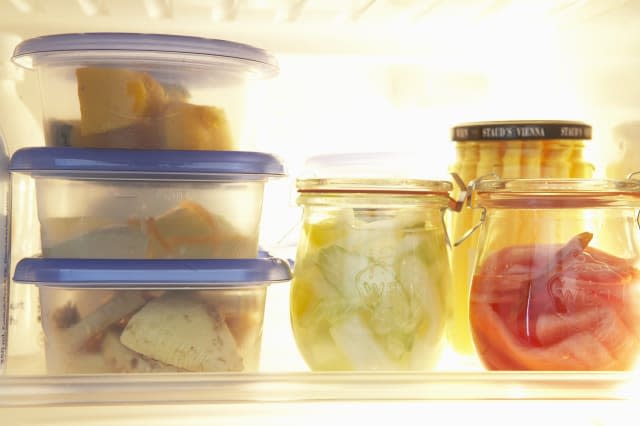Will reheating leftovers to save cash make you ill?

Have you resolved to waste less food and save money this year? Given that we throw away £2.1 billion worth of leftovers every year, a pledge to make the most of them and save the cash is a brilliant idea. According to the Food Standards Agency, a typical family can easy save up to £50 by cutting back on waste. The problem is that using leftovers the wrong way could make you seriously ill.
Tonight's episode of the BBC 2 show, Trust Me I'm a Doctor, will highlight that about half a million people in the UK get food poisoning every year. Half do so from their own cooking - with summer BBQs and Christmas leftovers as the two biggest causes.
It's worth taking steps, therefore, to reduce the risks, and there are seven golden rules that should ensure your leftovers are safe:
1) Handle the leftovers carefully. The European Food Information Council highlights the importance of ensuring the food only comes into contact with clean surfaces, hands, utensils, and storage pots. It's also essential to use a new container for storage, and not the one it was cooked or served in.
2) Let food cool down before you put it in the fridge - otherwise you raise the temperature inside the fridge and let bacteria grow on everything.
However, the NHS recommends that all leftovers should be put in the fridge within 90 minutes of being cooked - including the time it has been on the table (The Food Standards Agency recommends not leaving cooked rice out of the fridge for more than an hour). If it isn't going to cool in that time, the NHS suggests splitting it into smaller portions in shallow pots.
%VIRTUAL-ArticleSidebar-food-guide%
3) Most problems with leftovers come down to the way they are stored rather than any problem with cooking, so make sure you freeze or refrigerate it in time, and keep an eye on your fridge. If it is getting old, or the door tends to be a bit stiff, make sure you keep a thermometer in there so you can check the temperature never rises above 5C.
4) Don't store it for too long. You cannot tell if bacteria has grown on something purely by smelling it, so stick to the rules. Leftovers in the fridge need to be eaten within two or three days: those in the freezer within four months. The EFIC highlights that if you are unsure whether food has gone off, you must not taste it to be sure.
5) Defrost thoroughly before you use leftovers - either in the fridge or the microwave. The fridge is the safest place to defrost food. You should also cook it within 24 hours of defrosting (and not refreeze any leftovers).
6) Reheat it thoroughly. The Food Standards Agency recommends only reheating things once - and making sure it is piping hot all the way through. If you are cooking in an oven make sure the heat has reached the middle before you serve it. If you're using a microwave, it cooks in such a localised way that you'll need to stir it part of the way through cooking.
7) Take particular care with food that the Food Standards Agency lists as particularly hazardous. This includes cooked meat, seafood, sauces containing cream or milk, eggs, beans, nuts or other protein-rich food, plus cooked rice or pasta.





